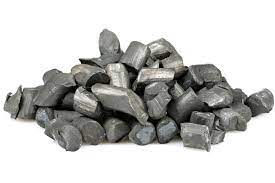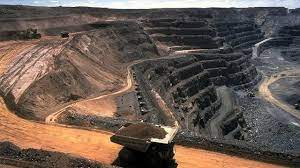Lithium is, of course, the brave new metal of the green energy revolution. We’ve not got any other material to use for automotive batteries, not of any consequence. The assumption is that lithium demand will rise at least 1000% over the next decade or so. The price has already risen at least that in anticipation to $80,000 a tonne or thereabouts.

How Do We Sort Potential Lithium Miners?
As we would imagine this has set off a race to be the people who own the new lithium mines. The stock markets are infested with would be lithium miners in fact. What we’d like is some useful metric to work out which ones are going to succeed. Fortunately, there is one. For it’s not in fact true that all will. Altura Mining (OTCPK: ALTAF) went bust a bit back despite having open a mine and producing. It just couldn’t carry the finance costs of having opened.
Note this isn’t about the biggies, Sociedad Quimica (NYSE: SQM), Albemarle (NYSE: ALB) and so on. Partly for chemistry reasons – there are a couple of ways to extract Li – and partly because they’re now mature operations. This is about those trying to get from interesting pieces of ground up to lithium producers. Is there some tell which gives us a clue as to whether they’re going to succeed or not?
There is indeed – does a Chinese company buy into the company? This is, of course, only a tell, not a certainty. It can also be played in one of two ways – with a Chinese investor we’ve guidance to the chances of success, but we can also play the game of trading on who might gain a Chinese investor.
The Thorny Details of Lithium Mining
So, that chemistry. It’s possible to extract from brines (SQM does this) and work directly up to a lithium salt that someone would actually like to use. There are all sorts of tests going on about extraction from geothermal waters, clays and so on. But the other main, after brines, method is from spodumene – also known as lithium hard rock mining.

Spodumene is indeed a useful source of lithium but no one mine is going to run the process from rock to battery material. Rather, the mine produces a 6% Li concentrate which then goes off to the concentrate processor. This is always going to be this way. Lithium concentrate processing is something with large economies of scale. No one mine will produce enough to keep an efficient plant humming along. Therefore no one mine will, in fact, build its own concentrate processor.
On the other hand, the concentrate plant wants to hum along efficiently and no one mine can feed it. So, there’s a symbiotic relationship there. What actually happens – generally – is that when any one spodumene mine looks like getting to the point – exploration and testing shows that it should – of working then the concentrate processor moves in and buys a chunk of the mine. This then provides some/ much of the capital that allows the mine to be built – and the processor gets first dibs on the lithium concentrate to feed its processing plant.
China And Lithium – The Nexus of The Market
As it happens nearly all these processing plants are in China. So, the major financiers of lithium mines are those Chinese companies that own the processing plants. The major financiers of finding a deposit that might be mined are us out there, buying shares in junior mining companies. But the push from deposit tested to actual mine being built tends to be financed by the processors.
Which is what has just happened to Kodal Minerals (LON: KOD). The company was tootling along testing, proving, showing that their Bougouni Mine was going to be worth actually digging and opening. Then the share price for Kodal jumped from 24 pence to 36 pence in 30 minutes on Jan 19. Because of this announcement. Hainan Mining (a subsidiary of Fosun) bought in and ends up owning 51% of the mine itself. That provides the money to develop it. It also gives Hainan security of supply of concentrate.
So, Lithium Mining Works Like This
This is how hard rock, or spodumene, mining for lithium works. A mining house – an investment bank or investment group that specialises in this area – funds the initial corporate formation. Then perhaps a float as a junior miner which funds the exploration and proving of the deposit. Then, if all works, then in comes the – usually – Chinese processor to buy into the project and fund it. It doesn’t have to work that way, but it often does, just given the industry structure.
Which is what gives our tell. If we want to play in the space of mines that are likely to get built, then we should probably be looking for those who already have that Chinese investment. This isn’t perfect – I have my doubts about Zinnwald Lithium (LON: ZINN) despite the presence of a Chinese investor – but it is a useful indicator all the same. Or, of course, we can speculate on what prospects for gaining a Chinese investor a project has. Say, Atlantic Lithium (LON: ALL) which is currently at the stage of being financed by one of those mining houses plus individual investors. It’s not necessary, essential, for them to bring one of the Chinese processors onboard but that’s a likely stage in the development process. That buy-in would be a validation of the prospects of the mine.
That Tell About a Lithium Mine
Really what we’ve got here is a little tell about the stage and prospects of a hard rock lithium mine. A large Chinese investor in the form of one of the concentrate processing companies tells us the geology and economics look good and there’s a strong probability of developing into production. A lack of that shows – again, not always, but often enough – that development has not progressed that far. With the intriguing possibility of a significant jump if and when it does happen, and a large part of the uncertainty is removed.
Like all tells and signs in the stock markets this one isn’t perfect but it’s still a darn good one.